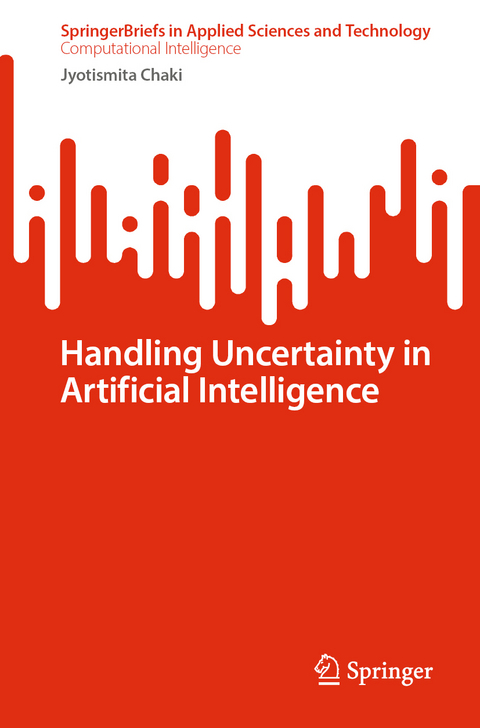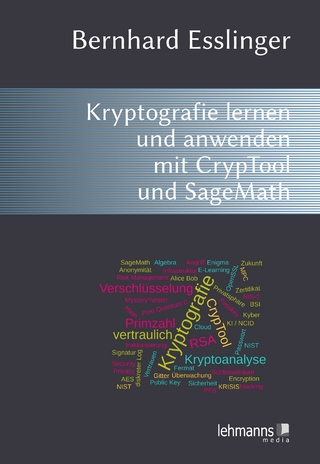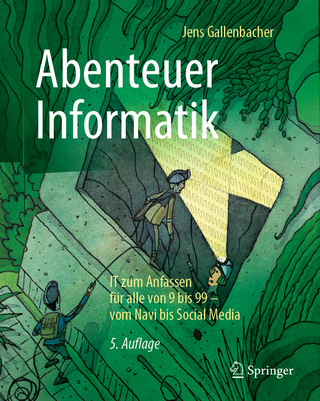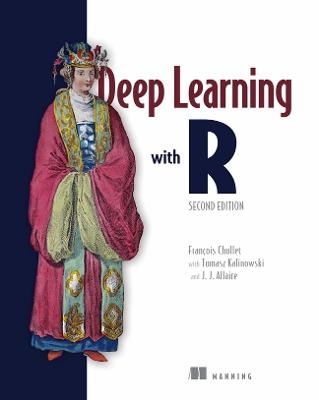
Handling Uncertainty in Artificial Intelligence
Springer Verlag, Singapore
978-981-99-5332-5 (ISBN)
lt;p>This book demonstrates different methods (as well as real-life examples) of handling uncertainty like probability and Bayesian theory, Dempster-Shafer theory, certainty factor and evidential reasoning, fuzzy logic-based approach, utility theory and expected utility theory. At the end, highlights will be on the use of these methods which can help to make decisions under uncertain situations. This book assists scholars and students who might like to learn about this area as well as others who may have begun without a formal presentation. The book is comprehensive, but it prohibits unnecessary mathematics.
JYOTISMITA CHAKI, PhD. is an Associate Professor in School of Computer Science and Engineering at Vellore Institute of Technology, Vellore, India. Her research interests include: Computer Vision and Image Processing, Pattern Recognition, Medical Imaging, Soft computing, Artificial Intelligence and Machine learning. She has authored and edited many international conferences, journal papers and books. Currently she is the editor of Engineering Applications of Artificial Intelligence Journal, Elsevier, academic editor of PLOS ONE journal and associate editor of Array journal, Elsevier, IET Image Processing, Applied Computational Intelligence and Soft Computing and Machine Learning with Applications journal, Elsevier.
lt;p>Table of Contents
Chapter 1: Introduction to handling uncertainty in artificial intelligence
1.1. Introduction
1.2. Common challenges of handling uncertainty in artificial intelligence
1.3. Numeric approaches
1.3.1. Probability and Bayesian theory
1.3.2. The Dempster-Shafer Theory
1.3.3. Certainty factor and evidential reasoning
1.3.4. Fuzzy logic-based approach
1.4. Symbolic approaches
1.4.1. Nonmonotonic approach
1.4.2. Cohen's theory of endorsements
1.5. Summary
Chapter 2: Probability and Bayesian Theory to Handle Uncertainty in artificial intelligence
2.1. Introduction
2.2. Popular phrases related to probability
2.2.1. Event
2.2.2. Sample space
2.2.3. Random variables2.3. Ways to solve uncertainty using probability
2.3.1. Bayes' theorem
2.3.2. Bayesian Belief Network
2.4. Advantages of probability-based methods
2.5. Limitations of probability-based methods
2.6. Summary
Chapter 3: The Dempster-Shafer Theory to handle uncertainty in artificial intelligence
3.1. Introduction
3.2. Basic terms used in D-S theory
3.2.1. Frame of discernment
3.2.2. Power Set
3.2.3. Evidence
3.2.4. Data source
3.2.5. Data fusion
3.3. Main Components of D-S Theory
3.3.1. Basic Probability Assignment (BPA) or Mass Function (M-value)
3.3.2. Belief function (Bel)
3.3.3. Plausibility Function (Pl)
3.3.4. Commonality function C (Q)
3.3.5. Uncertainty Interval (U)
3.4. D-S Rule of Combination
3.5. Advantages of D-S theory
3.6. Limitations of D-S theory
3.7. Summary
Chapter 4: Certainty factor and evidential reasoning to handle uncertainty in artificial intelligence
4.1. Introduction
4.2. Case study 1
4.3. Case study 2
4.4. Case study 3
4.5. Advantages of CF
4.6. Limitations of CF
4.7. Summary
Chapter 5: A fuzzy logic-based approach to handle uncertainty in artificial intelligence
5.1. Introduction
5.2. Characteristics of fuzzy logic
5.3. Fuzzy Logic vs Probability
5.4. Membership functions
5.4.1. Singleton membership function
5.4.2. Triangular membership function
5.4.3. Trapezoidal membership function
5.4.4. Gaussian membership function
5.4.5. Generalized bell-shaped membership function
5.4.6. Sigmoid membership function
5.5. Architecture of the fuzzy logic-based system
5.5.1. Rule base
5.5.2. Fuzzification
5.5.3. Inference engine
5.5.4. Defuzzification
5.6. Case study
5.7. Advantages of Fuzzy Logic System
5.8. Limitations of Fuzzy Logic System5.9. Summary
Chapter 6: Decision-making under uncertainty in artificial intelligence
6.1. Introduction
6.2. Types of Decisions
6.2.1. Strategic Decision
6.2.2. Administrative Decision
6.2.3. Operating Decision
6.3. Steps in decision making
6.4. Criterion for deciding under uncertainty
6.4.1. Maximax
6.4.2. Maximin
6.4.3. Minimax regret
6.4.4. Hurwicz criteria
6.4.5. Laplace criteria
6.5. Utility theory
6.5.1. Utility functions
6.5.1. Expected utility
6.6. Decision network
6.6.1. Solving the Weakness Decision Network - Enumerating all Policies
6.6.2. Solving the Weakness Decision Network - Variable Elimination Algorithm
6.7. Applying the Variable Elimination Algorithm to a Therapeutic Diagnostic Scenario
6.8. Advantages of expected utility under an uncertain situation
6.9. Limitations of expected utility under an uncertain situation
6.10. Summary
Chapter 7: Applications of different methods to handle uncertainty in artificial intelligence
7.1. Applications of Probability and Bayesian Theory in the field of uncertainty
7.2. Applications of Dempster-Shafer (DS) theory in the field of uncertainty
7.3. Applications of certainty factor (CF) in the field of uncertainty
7.4. Applications of Fuzzy logic in the field of uncertainty
7.5. Applications of utility and expected utility theory
7.6. Summary
| Erscheinungsdatum | 30.08.2023 |
|---|---|
| Reihe/Serie | SpringerBriefs in Applied Sciences and Technology | SpringerBriefs in Computational Intelligence |
| Zusatzinfo | 2 Illustrations, color; 40 Illustrations, black and white; XIII, 101 p. 42 illus., 2 illus. in color. |
| Verlagsort | Singapore |
| Sprache | englisch |
| Maße | 155 x 235 mm |
| Themenwelt | Informatik ► Theorie / Studium ► Algorithmen |
| Informatik ► Theorie / Studium ► Künstliche Intelligenz / Robotik | |
| Mathematik / Informatik ► Mathematik ► Analysis | |
| Technik | |
| Schlagworte | Certainty factor and evidential reasoning • Cohen's theory of endorsements • Decision Making • Dempster-Shafer Theory • Fuzzy logic-based approach • Nonmonotonic approaches |
| ISBN-10 | 981-99-5332-4 / 9819953324 |
| ISBN-13 | 978-981-99-5332-5 / 9789819953325 |
| Zustand | Neuware |
| Informationen gemäß Produktsicherheitsverordnung (GPSR) | |
| Haben Sie eine Frage zum Produkt? |
aus dem Bereich


